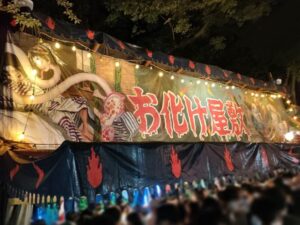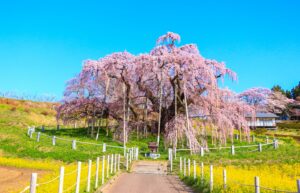Baseball is one of the most popular sports in Japan. As a result, some remarkable baseball players have come from Japan and have joined the Major Leagues in the United States. Here are three Japanese baseball players that will impress you with their success stories in the sport.
CONTENTS
Ichiro Suzuki
Baseball Hall of Famer, Iciro Suzuki, is an exceptional player who has made headlines both in Japan and the United States. Ichiro is from Toyoyama, which is a small town outside of Nagoya, where he and his father played baseball together. This motivated him to be a professional baseball player when he grew up. Ichiro played baseball as the primary pitcher for his high school team, and was then drafted by the NPB in 1991. Iciro was drafted to the Orix BlueWave, where he set a Japanese baseball record for the most hits in a single season. In 2001 he signed a contract with the Seattle Mariners. That year he had a great season, breaking the record of the most hits by any MLB player since 1930, and being the first player to lead in batting average and stolen bases since Jackie Robinson. This got Ichiro on the cover of Sports Illustrated and the American League Most Valuable Player.
In 2006, Ichiro played for the Japan National Baseball Team in the World Baseball Classic, leading them to victory against South Korea. In 2012, the Mariners traded Ichiro to the New York Yankees. This was followed by a year-long contract with the Miami Marlins. This was followed by a contract where Ichiro returned to his first team ,the Mariners.
Hideki Matsui
Hideki Matsui was born in Neagari, Ishikawa Japan. Naturally right handed, as a child Matsui’s brother was jealous of his natural baseball abilities and made him bat left-handed so he wouldn’t beat him. However this childish demand led to Matsui becoming an even better left-handed batter, making him an asset on the field. Matsui was recruited to a high school to play baseball, and then after high school was a first-round draft pick to the Yomiuri Giants. There, Matsui led his team successfully, and became known in Japanese and American media. It was in Japan that Matsui received the nickname “Godzilla,” at first as a tease for skin issues but later taking on a meaning of power for his hitting skills. In 2001, Matsui rejected a $64 million contract from the Yomiuri Giants, and instead signed with the New York Yankees in 2002. In 2003, he became the first Japanese player to hit a home run in the World Series. When Matsui went up to bat, the song “Godzillla” by Blue Öyster Cult was often played.
In 2009, Matsui became the first Japanese-born player to win the World Series Most Valuable Player Award, as well as the third player in Major League baseball to bat above a .500 and hit 3 home runs in the World Series among Lou Gehrig and Babe Ruth. Following this, Marsui signed a one-year contract with the Los Angeles Angels of Anaheim. This was followed by another one-year contract with the Oakland Athletics, then a minor league contract with the Tampa Bay Rays. Matsui then retired in 2013 by signing a one day contract with the Yankees and playing one final game.
Shohei Ohtani
Shohei Ohtani is from Iwate Prefecture in Northern Japan, where he attended high school and wowed everyone with his pitching speed. Ohtani joined the Hokkaido Nippon-Ham Fighters in Japan despite wanting to go straight to the major leagues and even receiving offers. This was because they offered to let him play as both a position player and a pitcher, which the major leagues probably would not have allowed. Ohtani was a leading player, and performed outstandingly throughout his time playing for the Hokkaido Nippon-Ham Fighters.
In 2017, Ohtani signed for the Los Angeles Angels after many other offers. Ohanti had a rough start to this contract, as he was injured and had to undergo surgery. However, following his recovery, in 2019 Ohanti became the first Japanese-born player in MLB history to hit for the cycle. Covid halted further opportunities for Ohanti in the Los Angeles Angels until July 2020, when he played again only to continue to have issues related to his previous surgery. However, he still became the first All-Star player to play as both a pitcher and player.












